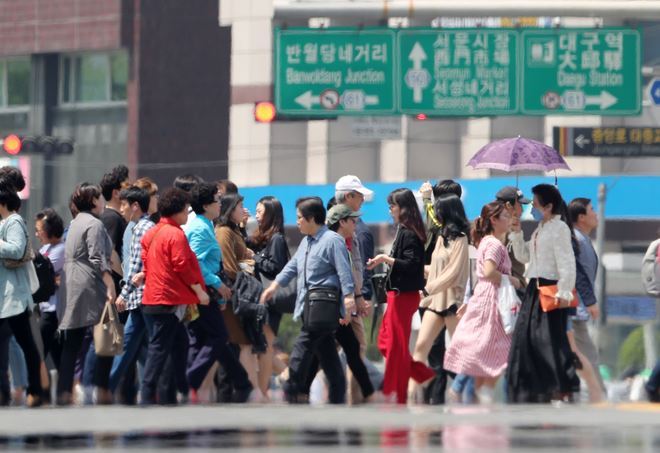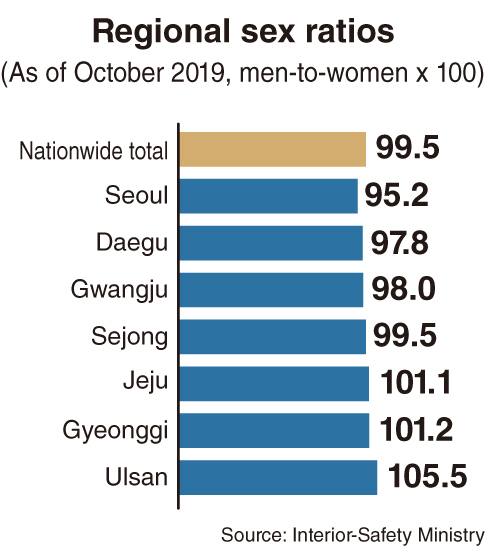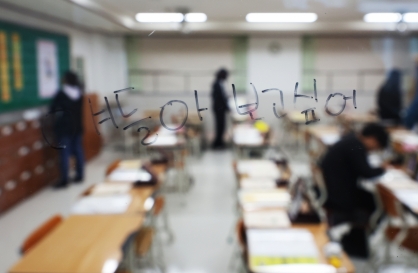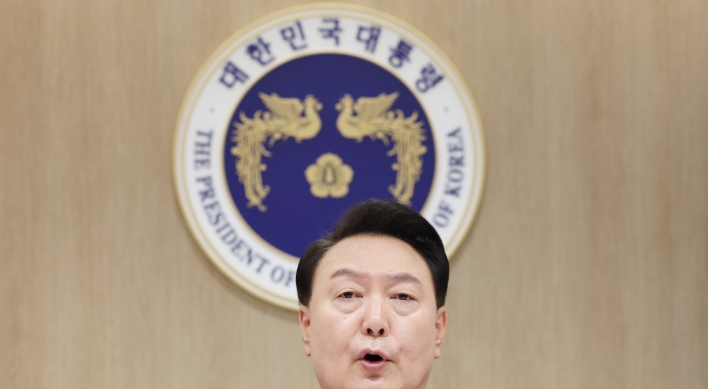[News Focus] Women increasingly outnumber men in Korea
Men-per-100 women dips to all-time low of 99.5, despite 102.3 ratio among newborns
By Kim Yon-sePublished : Nov. 19, 2019 - 15:53
SEJONG -- The number of women was found to have overtaken that of men in South Korea more than four years ago, a demographic database held by the government showed.
According to the Ministry of Interior and Safety, the changeover took place on June 2015, when the number of men per 100 women fell to 99.9 -- or by 25.7153 million male Koreans to 25.7157 million female Koreans.
It was the first time the gender ratio had dropped below 100 since the nation began compiling the relevant figures.
The ratio has further slid by about 0.1 percentage point per annum over the past years -- 99.8 in October 2016, 99.7 in October 2017 and 99.6 in October 2018.
According to the Ministry of Interior and Safety, the changeover took place on June 2015, when the number of men per 100 women fell to 99.9 -- or by 25.7153 million male Koreans to 25.7157 million female Koreans.
It was the first time the gender ratio had dropped below 100 since the nation began compiling the relevant figures.
The ratio has further slid by about 0.1 percentage point per annum over the past years -- 99.8 in October 2016, 99.7 in October 2017 and 99.6 in October 2018.

As of October 2019, women outnumbered men by 116,347 with the sex ratio dropping to a record-low of 99.5. The male and female populations were 25.86 million and 25.98 million, respectively.
Last month -- like past months and years -- the sex ratio has showed deviations among the country’s 17 major areas, or eight cities and nine provinces, according to regional characteristics such as urbanization, farming communities, service industries, manufacturing towns and military zones.
Seoul recorded the lowest ratio, 95.2, in the number of men per 100 women among the 17 major areas by 4.74 million to 4.98 million. The capital has traditionally been a women-outnumbering-men area for more than a decade.
Busan ranked the second-bottom at 96.4 as of October, trailed by Daegu at 97.8, Gwangju at 98, North Jeolla Province at 98.8, Sejong at 99.5 and Daejeon at 99.7.
The remaining 10 areas still saw men outnumber women. Ulsan, a manufacturing city, topped the list in the sex ratio with 105.5, followed by South Chungcheong Province with 103.8 and North Chungcheong Province with 102.5.
Gyeonggi Province, the nation’s biggest in terms of population, posted 101.2 in the ratio by 6.65 million (men) to 6.56 million, and the others, including Incheon and Gangwon Province were in a similar level around 101.
A government official said the reversal in the sex ratio “is roughly attributable to women’s longer lifespan compared to men in South Korea, despite still existing preference for sons in childbirth.”
The number of men aged between 70 and 79 was 1.60 million across the nation last month, while the figure for women for the age group tallied 1.98 million.
The demographic disparity further widened among generations aged 80 or over. Korean men and women in their 80s were 550,000 and 1.05 million; in their 90s at 51,000 vs. 176,000; and centenarians at 4,783 vs. 15,201.

Furthermore, the total population of Korean men fell for the third consecutive month since August 2019 (-261, -354 and -844 in turn), while the female population climbed more than 2,000 every month during the August-October period.
But boys still outnumber girls among newborn babies.
Last month, the number of male babies came to 13,303, compared to females at 13,000.
Boys outnumbered girls among newborns in 11 (including Seoul, Gyeonggi Province and Sejong) of the 17 major areas. The figures for boys and girls were tied in Daejeon, while five (South and North Jeolla provinces; South and North Gyeongsang provinces; and Jeju Province) recorded the opposite.
Newborn male babies outnumbered females nationwide every month over the past 70 months since January 2014, when the Interior Ministry started compiling, or publicizing, its official data.
Nonetheless, Korean households’ preference for sons appears to have gradually waned: The ratio of boys born per 100 female babies has dropped to 102.3 in October 2019, compared to 103.6 five years earlier in October 2014.
The sex ratio among newborns exceeded 110 in the 1990s, according to some unofficial statistics.
Meanwhile, yearly population figures compiled by Statistics Korea, a state-run agency, show some differences with the monthly data of the Interior-Safety Ministry.
By Kim Yon-se (kys@heraldcorp.com)


















